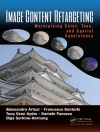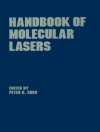There are many images of science and the activities of scientists. Some would imply that science would eventually reach the limits of knowledge while others create an expectation of endless horizons. Some people would believe that science has or will provide the answers to key open questions that lay ahead, while others experience fear regarding its development.
In this book, we will look at all these aspects, going from particles, via atoms, cells, starts, galaxies, our place in the universe, to explore what makes us, human beings, really unique in nature: our ability to imagine and shape the future by making use of the scientific method.
The book is an EPS action designed to address the social dimension of science and the grand challenges in Physics that will bring radical change to developed societies, to raise standards of living at the global scale, and to provide basic understanding of nature on the Horizon 2050.
Key Features:
- Describe the world’s physics agenda to solve at the horizon 2050.
- Explore our ability to imagine and shape the future by making use of the scientific method.
- Reports prepare for a wide community avoiding as much as possible technical jargon, communicating results for non-experts in the field.
- Specific target audiences are young people looking for perspectives in physics and policy makers.
- The book should reach a broad audience that is willing to explore a future shaped by science.
Tabla de materias
Preface
Acknowledgements
Coordinators
List of contributors
1 Introduction
Part I Physics as global human enterprise for understanding nature
2 Physics bridging the infinities
Freya Blekman, Angela Bracco, Nelson Christensen, Emmanuel Dormy, Patrick Eggenberger, Claus Kiefer, Franck Le´pine, Mairi Sakellariadou, Emmanuel N Saridakis, Jochen Schieck and Claudia-Elisabeth Wulz
2.1 Introduction
2.2 Particle physics: physics beyond the Standard Model
2.2.1 Particle physics: the extremely small connects to the big scientific questions
2.2.2 The LHC and the discovery of the Higgs boson
2.2.3 The challenge of breaking the Standard Model
2.2.4 The challenge of searching for new particles
2.2.5 Leaving no stone unturned 2.2.6 Beyond the general-purpose experiments
2.2.7 Beyond the LHC
2.2.8 Challenges
2.2.9 Challenges: the data challenge
2.2.10 Challenges: the accelerators of the future
2.2.11 Challenges: timing detectors and detector innovation
2.2.12 Challenges: the theory challenge
2.2.13 What is the ultimate status of the constants of Nature?
2.3 The origin of visible matter
2.3.1 Introduction
2.3.2 The fundamental description of the heart of matter
2.3.3 Nuclear structure and reactions for the origin of elements
2.3.4 Challenges and opportunities up to 2050
2.3.5 The fundamental description of the heart of matter: future perspectives
2.3.6 Nuclear structure and reactions and the origin of elements: future perspectives
2.4 Quantum gravity—an unfinished revolution2 2.4.1 Present understanding and applications
2.4.2 Challenges and opportunities in the Horizon 2050
2.4.3 Appendix
2.5 What is the Universe made of? Searching for dark energy/matter
2.5.1 Dark matter—general overview
2.5.2 Dark energy
Acknowledgment
2.6 A gravitational universe: black holes and gravitation waves
2.6.1 Introduction
2.6.2 Gravitational waves
2.6.3 Black holes
2.6.4 Gravitational-wave detections and what they tell us about black holes
2.6.5 The path to supermassive black holes
2.6.6 Testing general relativity
2.6.7 Hubble constant
2.6.8 LIGO, Virgo, and KAGRA observation schedules
2.6.9 Challenges and opportunities
Acknowledgments
2.7 Stars, the Sun, and planetary systems as physics laboratories
2.7.1 General overview
2.7.2 The mechanical equilibrium of a star
2.7.3 The energy of a star
2.7.4 Evolution as a function of the initial mass
2.7.5 Challenges and opportunities
2.7.6 The Sun: the solar modelling problem
2.7.7 From the Sun to distant stars
2.7.8 The star–planet connection
2.8 Physics of the Earth’s interior
2.8.1 General overview
2.8.2 The origin of the Earth’s magnetic field
2.8.3 The physics of volcanic eruptions
2.8.4 Earthquakes
2.8.5 Challenges and opportunities
Acknowledgments
References
3 Matter and waves
Marco Baldovin, Antoine Browaeys, Jose´ Maria de Teresa, Claudia Draxl, Frederic Druon, Giacomo Gradenigo, Jean-Jacques Greffet, Franck Le´pine, Jan Lu¨ning, Lucia Reining, Pascal Salie`res, Pierre Seneor, Luis Silva, Thomas Tschentscher, Kees van Der Beek, Antje Vollmer and Angelo Vulpiani
3.1 Introduction
3.2 Quantum many-body systems and emergent phenomena
3.2.1 General overview
3.2.2 Quantum
3.2.3 Interacting
3.2.4 Quantum and interacting
3.2.5 Many-body
3.2.6 Tiny differences, large effects: symmetry breaking
3.2.7 More can be very different
3.2.8 Challenges and opportunities
3.3 The search for new materials
3.3.1 General overview
3.3.2 Present understanding and application
3.3.3 Challenges and opportunities on the Horizon 2050
3.3.4 Final considerations
3.3.5 Acknowledgments
3.4 Manipulating photons and atoms: photonics and nanophysics
3.4.1 The landscape in the 1960s
3.4.2 Nanophysics: there is plenty of room at the bottom
3.4.3 Photonics: let there be light
3.4.4 Challenges and opportunities
3.5 Extreme light
3.5.1 Synchrotron radiation
3.5.2 X-ray free-electron lasers—studying the dynamics of atomic and electronic structures
3.5.3 Attosecond light sources
3.5.4 Attosecond applications—imaging at the attosecond scale
3.5.5 Laser–plasma interaction and the ultra-relativistic limit
3.5.6 Challenges and opportunities
3.6 Systems with numerous degrees of freedom
3.6.1 Introduction
3.6.2 The role of Kolmogorov–Arnold–Moser (KAM) and chaos for the timescales
3.6.3 Challenging the role of chaos
3.6.4 From classical to quantum: open research directions
References
4 Physics for understanding life
Patricia Bassereau, Angelo Cangelosi, Jitka C ˇ ejkova´, Carlos Gershenson, Raymond Goldstein, Zita Martins, Sarah Matthews, Felix Ritort, Sara Seager, Bart Van Tiggelen, David Vernon and Frances Westall
4.1 Introduction
4.1.1 Physics for understanding intelligence and life
4.2 Searching for life in the Universe: what is our place in the Universe?
4.2.1 General overview
4.2.2 Challenges and opportunities for 2050
4.2.3 Conclusions and recommendations
Acknowledgments
4.3 Artificial intelligence: powering the fourth industrial revolution
4.3.1 What is AI, where did it come from, and where is it taking us?
4.3.2 The nature of AI
4.3.3 Example applications
4.3.4 Future challenges
4.3.5 Summary and conclusion
Acknowledgements
4.4 Artificial life: sustainable self-replicating systems
4.4.1 General overview
4.4.2 Soft ALife
4.4.3 Hard ALife
4.4.4 Wet ALife
4.4.5 Self-replicating systems
4.4.6 Challenges and opportunities: a 2050 vision
4.5 Toward a quantitative understanding of life
4.5.1 General overview
4.5.2 Physics meets biology over the last 60 years
4.5.3 Challenges and opportunities for the future
4.5.4 The future
Acknowledgements
4.6 The emergence of life: the Sun–Earth connection
4.6.1 Introduction
4.6.2 Challenges and opportunities
4.6.3 The grand challenges
References
Part II Physics developments to tackling major issues affecting the lives of citizens
5 Physics for health
Ralph Assmann, Darwin Caldwell, Giulio Cerullo, Henry Chapman, Dana Cialla-May, Marco Durante, Angeles Faus-Golfe, Jens Hellwage, Susanne Hellwage, Christoph Krafft, Timo Mappes, Thomas G Mayerhofer, Thierry Mora, Andreas Peters, Chiara Poletto, Juergen Popp, Felix Ritort, Petra Ro¨sch, Lucio Rossi, Marta Sales-Pardo, Iwan Schie, Michael Schmitt, Friedrich Simmel and Aleksandra Walczak
5.1 Introduction
5.2 Accelerators for health
5.2.1 Motivation to use and expand x-rays and particle therapy
5.2.2 Further developments in the next decades
5.3 Bionics and robotics
5.3.1 Bioinspired micro- and nanorobotics
5.3.2 Robotics in healthcare
5.4 Physics for health science
5.4.1 Light for health
5.4.2 Synchrotrons and free-electron lasers for structural biology
5.5 Physics research against pandemics
5.5.1 Introduction
5.5.2 The physics of host–pathogen evolution
5.5.3 The physics of epidemics
5.5.4 Facing outbreaks
5.5.5 Conclusions
5.6 Further diagnostics and therapies
5.6.1 High-resolution imaging
5.6.2 Innovative therapy
5.6.3 Superconducting magnets from high-energy physics hadron colliders to hadron therapy
Acknowledgements
Acknowledgement of support
References
6 Physics for the environment and sustainable development
Ankit Agarwal, Philippe Azais, Luisa Cifarelli, Jacob de Boer, Deniz Eroglu, Gerard Gebel, Carlos Hidalgo, Didier Jamet, Juergen Kurths, Florence Lefebvre-Joud, Søren Linderoth, Alberto Loarte, Norbert Marwan, Natalio Mingo, Ugur Ozturk, Simon Perraud, Robert Pitz-Paal, Stefaan Poedts, Thierry Priem, Bernd Rech, Marco Ripani, Shubham Sharma, Tuan Quoc Tran and Hermann-Josef Wagner
6.1 Introduction
6.2 Earth system analysis from a nonlinear physics perspective
6.2.1 Introduction
6.2.2 Nonlinear concepts
6.2.3 Applications of nonlinear dynamics in the Earth’s system
6.2.4 Outlook
6.3 Physics fields with relevance for energy technologies
6.3.1 Solar energy 6.3.2 Physics of energy: wind energy
6.3.3 Energy storage
6.3.4 Fusion energy development
6.3.5 Fission energy: general overview
6.4 Towards green cities: the role of transport electrification
6.4.1 Transport, climate change, and air pollution
6.4.2 How to reduce urban transport emissions?
6.4.3 Transport electrification: state of the art
6.4.4 Challenges and opportunities for physicists: the role of modeling, simulation, and characterization
6.5 Environmental safety 6.5.1 Introduction
6.5.2 Current developments in production and restriction of chemicals
6.5.3 Challenges and opportunities towards 2050
6.5.4 Conclusions and outlook
6.6 Understanding and predicting space weather
6.6.1 General overview
6.6.2 Socioeconomic importance
6.6.3 Current state of the art
6.6.4 Achievements
6.6.5 Most urgent needs
6.6.6 Coupling different simulation models
6.6.7 Challenges
6.6.8 Opportunities
Acknowledgments
References
7 Physics for secure and efficient societies
Felicia Barbato, Mark Barthelemy, Christian Beck, Jacob D Biamonte, J Ignacio Cirac, Daniel Malz, Antigone Marino, Zeki Can Seskir and Javier Ventura-Traveset
7.1 Introduction
7.2 Second quantum revolution: quantum computing and cybersecurity
7.2.1 The second quantum revolution: quantum computing and information
7.2.2 Milestones of research activity in quantum computing
7.3 Sensors and their applications
7.3.1 Sensor characteristics
7.3.2 General overview of sensors
7.3.3 Sensors challenges
7.3.4 Conclusions
7.3.5 About the author
7.4 The space sector: current and future prospects
7.4.1 The space sector today: a quick balance
7.4.2 Space science: a golden age
7.4.3 A new era for space exploration
7.4.4 Space and climate change
7.4.5 Satellite navigation
7.4.6 The problematic of space debris
7.4.7 The prospects of planetary defence
7.4.8 The prospects of New Space
7.4.9 Summary
7.5 Large-scale complex sociotechnical systems and their interaction
7.5.1 Complexity and modeling
7.5.2 Results and challenges in urban systems
7.5.3 Discussion and perspectives
Acknowledgments
References
8 Science for society
Tobias Beuchert, Jean-Claude Burgelmann, Alan Cayless, Frederic Darbellay, Bengt Gustafsson, Sally Jordan, Philip Macnaghten, Eilish Mc Loughlin, Christophe Rossel, Pedro Rodrigues Dos Santos Russo, Luc van Rossel and Francois Weiss
8.1 Introduction
8.1.1 EPS grand challenges: physics for society at the horizon 2050
8.2 Science for society: education, research, ethics, and public engagement
8.2.1 The future of physics education
8.2.2 The challenges of physics education in the digital era
8.2.3 The interdisciplinary challenge: the why, the what, the where, the who, and the how 8.2.4 Education and training across sectoral borders
8.3 Science with and for the citizens
8.3.1 The linear model of innovation
8.3.2 The grand challenge model of science for society
8.3.3 The coproduction model of science and society
8.3.4 A framework of responsible research and innovation
8.3.5 Challenges and opportunities
8.4 Open communication and responsible citizens
8.4.1 Open communication: public engagement with science
8.4.2 Open data: the building block of 21st century (open) science
8.5 Science and ethics
8.5.1 Introduction
8.5.2 Ethics of the science process
8.5.3 Forgery
8.5.4 Plagiarism
8.5.5 Reviewing science
8.5.6 Shadow zones: boasting
8.5.7 Shadow zones: the replication crisis
8.5.8 Shadow zones: cherry picking and the sheep–goat effect
8.5.9 Shadow zones: authorship 8.5.10 Popular science and teaching the public
8.5.11 Science advice
8.5.12 Attempts to strengthen integrity and ethical awareness in science
8.5.13 Strengthening ethical behaviour by relaxing competition
8.6 The limits of science
8.6.1 Technical, fundamental, and epistemological limits of science
8.6.2 The future of humankind and behaviour
References
Sobre el autor
Carlos Hidalgo received his Ph D degree from Madrid Complutense University with his work on structural defects in solids and positron annihilation spectroscopy. His next area of research was related to plasma turbulence, transport and plasma diagnostics at CIEMAT where he is currently leading the Spanish National Fusion Laboratory.
Carlos has worked in different international laboratories, initially as a Ph D student (Technical University of Denmark, Nuclear Research Centre of Grenoble, Technical University of Helsinki) and later as visiting scientist (Fusion Centre at the University of Austin (US), Oak Ridge National Laboratory (US), Joint European Torus (UK), Max Planck Institute (Germany), National Institute Fusion Studies (Japan), Southwestern Institute of Physics (SWIP, China)).
He has led different research teams in the framework of the International Fusion Programme and participated in European and International Advisory Committees on Fusion Science and Technology. He has chaired the Division of Plasma Physics and the Forum on Physics and Society of the European Physical Society.












